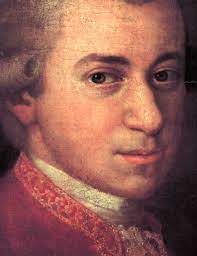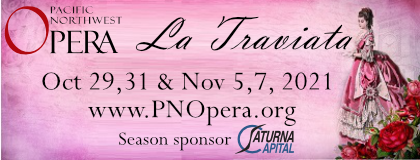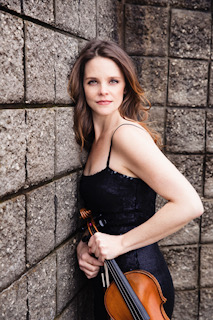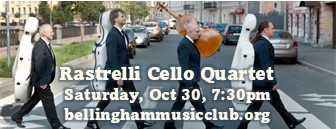
Hello, and welcome back to live performances! We are so very happy to be here and share the joy of music with you again in person.
You will have noticed some changes we’ve made, in order to keep things as safe as possible for you, our musicians, staff, and volunteers.
- Two performances of each concert at reduced capacity.
- Proof of vaccination must be shown to enter the theatre.
- Masks must be worn at all times in the theatre.
- No intermission – each concert is an hour long.
- No concessions (to reduce activity in lobby).
- These electronic programs (so that we don’t have as much material moving from person to person).
We have an amazing season lined up for you, with performers from last season’s virtual concerts, and some new as well. Alex Klein, Inna Faliks, Demarre McGill, Bella Hristova, Jessica Choe, and Daniel Bolshoy, as well as our Holiday concert featuring A Dickens Christmas Carol Suite.
Coming up next in November, we have the iconic Alex Klein playing Bach. We have also persuaded Music Director Yaniv Attar to not only play a guitar duet with Michael Partington, but conduct from the guitar! You will not want to miss this concert.
We so appreciate all of your support that allowed us to continue to provide the joy and gift of music and musical education to our region during these times. In order to continue this, we are broadcasting each concert to the community, for free, on BTV, the Sunday after each concert. We know that not everyone can attend during these times, and we don’t want anyone to be left out, especially those too young to be vaccinated.
Thank you again, and enjoy the concert!
Gail Ridenour
Executive Director
Dawn Posey, violin
Shu-Ling Zhao, poetry reading
Audrey Negro, visuals
September 25, 2021 @ 7:30 PM
September 26, 2021 @ 3:00 PM
Chevalier de Saint-Georges (1745-1799)
SYMPHONY NO. 2 IN D MAJOR, OP. 11 (11')*
I. Allegro Presto
II. Andante
III. Presto
Ralph Vaughan Williams (1872-1958)
THE LARK ASCENDING (15')
Wolfgang Amadeus Mozart (1756-1791)
SYMPHONY NO. 29 IN A MAJOR, K. 201 (27')
I. Allegro moderato
II. Andante
III. Menuetto: Allegretto
IV. Allegro con spirito
Dr. Ryan Dudenbostel’s informative and engaging Pre Concert Lecture about the program will air in the week before our concert, on the BSO website here.
*Edition by Yaniv Segal
Dawn Posey is an active chamber musician, teacher and performer both in Pittsburgh and beyond. She has performed with the Boston Conservatory Honors Quartet, Festival A Tempo in Caracas, Venezuela, the Chamber Music Festival of Amman, Jordan, Blossom Music Festival, and Tanglewood Music Center. Additionally, she has appeared as a soloist with orchestras in Missouri, Indiana, and England.
She is a founding member of Kassia Ensemble, a new chamber music ensemble in Pittsburgh made up entirely of female performers. Kassia Ensemble seeks to empower women through quality performance, collaboration, and outreach.
Dawn is a devotee of baroque performance practice, and a frequent guest artist with Chatham Baroque. She has toured with the ensemble to Ecuador and Los Angeles. Dawn was also a participant in the 2015 Tafelmusik Baroque Summer Institute.
Dawn received the Starling Scholarship at the University of Cincinnati Conservatory of Music, where her primary teacher was Dr. Won-Bin Yim. She has also studied with the late renowned string pedagogue, Miss Dorothy Delay, at Aspen Music Festival, Lynn Chang at the Boston Conservatory, Mrs. Almita Vamos in Chicago, and with concert violinist Rachel Barton Pine.

Audrey is a freelance brand designer behind the BSO logo and branding, as well as a BSO violinist. She earned a BFA in graphic design at the University of Notre Dame along with a BA in violin performance. She served as concertmaster of the NDSO for four years which landed many opportunities, including a Carnegie Hall performance. Her education has always fueled a desire to design within the musical space, and she has created numerous projected multimedia pieces to support live as well as recorded performances for chamber and symphonic groups.

Shu-Ling Zhao is a theater maker and teacher, community organizer, and social justice advocate. She is also part of the founding team of the Sylvia Center for the Arts and worked as an independent theater artist with iDiOM Theater for the last fifteen years as a director, fabrication, technician, designer, dramaturg, and actor. Over the last year and a half, Zhao has been a community organizer and alongside Kristina Michele Martens, is working to found a Whatcom Racial Equity Commission. This work has led to her and her teammates receiving the Whatcom Dispute Resolution Center’s 2021 Peace Builder Awards for Social Justice.

- American founding framer John Adams declared Joseph Bologne, Chevalier de Saint-Georges, “the most accomplished man in Europe.”
- A. Mozart composed nearly three quarters of his 41 symphonies by the age of 18.
- Mozart and Bologne lived under the same roof in Paris for a short time in the summer of 1778.
- It is likely that Mozart borrowed a theme from one of Bologne’s violin concertos for his Sinfonia Concertante for Violin and Viola, K. 364.
PROGRAM NOTES

While so much early twentieth century art—as in the centuries before it—is marked by an insatiable drive for innovation and novelty, there is also a strong countercurrent of artists looking retrospectively to the images, sounds, and devices of the past. The British composer Ralph Vaughan Williams (1872-1958) was of this latter camp. His music makes little effort at modernization, instead sending its roots into the deepest bedrock of English tradition. The Lark Ascending, based on a pastoral poem of the same name by George Meredith, was first written in 1914 as a short piece for violin and piano. After the First World War (Vaughan Williams enlisted in the British army at the age of 41, taking a hiatus from his musical career), he returned to the work, expanding it and setting it for violin and orchestra. The sweet trilling of the lark is heard in the solo violin throughout, accompanied by passages of the ravishing lyricism that is so endemic to Vaughan Williams’ style. Profoundly sentimental, the work is at once a warm remembrance and a mournful ode to simpler times irrevocably lost.

Perhaps counterintuitively, the nostalgia that we encounter in Vaughan Williams is a relatively contemporary phenomenon. It certainly would have been an alien concept in the eighteenth century, a time of unparalleled invention and discovery that set into motion the pistons of the Industrial Revolution and heralded the modern world we know today. Impetuous and cosmopolitan from his first steps, Wolfgang Amadeus Mozart (1756-1791) could have been a poster child for the period. The year 1774 found the eighteen-year-old prodigy recently returned from Vienna to Salzburg after an extended visit with his father in search of employment. Mozart held a position as a musician in the Archduke of Salzburg’s court, but felt both stifled and undervalued in the city’s provincial climate. While his visit to Vienna sparked the interests of a number of potential patrons, genuine prospects failed to materialize. This experience would be repeated with frustrated efforts in Mannheim, Munich, and Paris, before Mozart finally struck out for Vienna as a freelancer in 1781.
Nonetheless, with these future disappointments still hidden beyond the horizon, Mozart came home to Salzburg feeling optimistic and buoyed by Vienna’s metropolitan energy and culture, as well as by the music he’d heard there—in particular the latest string quartets and symphonies of Joseph Haydn. His head swirling with new ideas, Mozart set pen to paper to compose what would be numbered his twenty-ninth symphony (K. 201 in A Major). The first movement’s opening in the strings is gentility embodied, with an elegant theme that is steadily raised in pitch to create a sense of tension and forward momentum. The symphonic sonata-allegro form was still in its adolescence in the mid-1770s, so the movement’s central development section—which Beethoven and others would later expand to probe the most distant musical frontiers in the coming century—is here limited to just a minute or two of music. The structure throughout is tight and balanced, without a single note in excess.
The lovely Andante second movement burbles along with an endless stream of galant-style tropes, its familiarity and good-naturedness the essence of charm. Mozart counters the supple curves of the Andante with a snappy, concise minuet; the seriousness of the inner trio section is almost comical in the context of the spritely, angular music that surrounds it. The finale returns to the effervescence of the Symphony’s opening, but abandons the urbane setting of the first movement for a much more rustic spirit. This music—complete with the jocular calls of hunting horns—owes a great deal to Haydn, whose symphonies and quartets of the period also frequently ended with a rollicking visit to the countryside.

Despite the canonic status of Haydn, Mozart, and Vaughan Williams in the musical pantheon, the biographies of few historical figures—musical or otherwise—can compare to remarkable tale of Joseph Bologne, Chevalier de Saint-Georges (1745–1799). Though he was described as Le Mozart Noir in his lifetime, the range and depth of Saint-Georges’ achievements defy comparison with any other individual—even one as extraordinary as Mozart. Born on a Caribbean plantation on Christmas Day in 1745, Saint-Georges was the son of the wealthy French plantation owner George Bologne de Saint-Georges and his African slave Nanon. As a young boy, Joseph was sent across the sea to Paris to receive a proper schooling. He quickly proved himself an outstanding student and athlete, excelling in all of his subjects and achieving notoriety in Parisian fencing circles. By the age of 21, Bologne’s swordsmanship was so accomplished, he was knighted (adding the title “Chevalier” to his title) and appointed to Louis XVI’s royal guard. Buoyed by the fame of his fencing, Saint-Georges—also an adroit dancer, horseman, and raconteur—moved easily among the ranks of French high society, a staggering feat considering his mixed ethnicity.
In addition to his athletic prowess, Bologne also possessed a virtuosic command of the violin. Little is known about his early training, but by 1766 he had come under the mentorship of the composer and conductor François-Joseph Gossec, who dedicated a number of string trios to Bologne and hired him as concertmaster of his new orchestra, Le Concert des Amateurs (an elite organization despite its title). When Gossec was promoted to the directorship of the Concert Spirituel—a prestigious series of concerts during religious holidays and the Lenten season, in which the opera houses were closed—he tapped his young protégé to succeed him in leading the Amateurs. Bologne’s rigorous approach and exacting standards elevated the level of the orchestra to among the finest in Europe, drawing the attention and admiration of Queen Marie Antoinette herself.
When the French Revolution broke out in 1789, Bologne became the head of the first black regiment in all of Europe; his fame attracted recruits of African descent from across France (the father of author Alexandre Dumas was among his officers) to join what became known as the “Légion Saint-Georges.” He was also a key figure in French and British abolitionist movements: his intellect and myriad talents held up as exemplars for the equality of the races and the immorality of slavery.
Musically, Joseph Bologne, Chevalier de Saint-Georges was very much a man of his time. His buoyant, clear-cut phrases and airy textures epitomize the galant style then in vogue, representing a pivot away from the strictness and dense counterpoint of Bach and his contemporaries a generation earlier. Among Bologne’s works are two symphonies, a half-dozen operas, seven violin concertos (written for himself), and a wealth of chamber music. He was also a leading contributor to the genre of the symphonie concertante, a sort of hybrid between the old concerto grosso of the Baroque and the solo concerto of the Classical era.
Bologne’s Second Symphony in D Major dates from 1779, when he was at the height of his powers with the Concert des Amateurs. Its three short movements are all light and breezy, with transparent colors and clear, simple melodies. The D-minor middle movement is notable for the bass line’s imitation of the melody one bar late, and the brisk finale a la chasse takes some unexpected harmonic detours to the remote key of F Major before abruptly returning to the home key of D, anticipating similar adventures in Beethoven’s symphonies. Bologne recycled his symphony as the overture to his opera L’Amant anonyme (The Anonymous Lover) in 1780.
![]()
Program notes sponsored by: First Federal
We are so grateful for our generous sponsors!
Season: Peoples Bank & Bellingham Porsche/Audi
Concert: Erin Schlichting, CPA
Guest Artist & Pre Concert Lecture: Waycross Investment
Program Notes: First Federal
For a full list of BSO's sponsors, please visit our website sponsor page.
Chamber orchestra musicians performing in this concert are in bold.
Music Director
Yaniv Attar (bio)
The Jack & Marybeth Campbell Music Director
Violin I
Dawn Posey (bio)
The Garland Richmond & Richard Stattelman Concertmaster
Shu-Hsin Ko
Assistant Concertmaster
Emily Bailey
David Bean**
Gaye Davis
Joanne Donnellan
Irene Fadden
Matt Gudakov
Yelena Nelson
Sandra Payton **
Krissy Snyder
John Tilley
Karen Visser
Bill Watts
Violin II
Yuko Watanabe
The Debbie & Steve Adelstein Principal 2nd Violin
Heather Ray
Assistant Principal 2nd Violin
Linnea Arntson
Liza Beshara
Judy Diamond
Kathy Diaz
Geneva Faulkner
Ben Morgan
Audrey Negro *
Cecile Pendleton
Carla Rutschman
Tara Kaiyala Weaver
Joy Westermann
Viola
Morgan Schwab
The Byron & Becky Elmendorf Principal Viola
Katrina Whitman §
Assistant Principal Viola
Kacey Bradt
Jo Anne Dudley
Becky Elmendorf
Natalie Louia
Valerie McWhorter
Michael Neville
Jim Quist
Corey Welch
Cello
Nick Strobel
The Phyllis Allport Principal Cello
Tallie Jones
The John W. Tilley Jr. Assistant Principal Cello
Erin Esses Lusk
Noel Evans
Jeremy Heaven
Barb Hunter
Coral Marchant
Mary Passmore
Bette Ann Schwede
Samantha Sinai
Daniel Watterson
Bass
Mark Tomko
The Charli Daniels Principal Bass
Eirik Haugbro
Assistant Principal Bass (Acting Principal Bass)
Amiko Mantha
(Acting Assistant Principal Bass)
Faye Hong
Anna Jull
Flute
Deborah Arthur
The Marcela Berg & Michael Addison Principal Flute
Gena Mikkelsen
Piccolo
Gena Mikkelsen
The Carol & Dennis Comeau Piccolo
Oboe
Kristen Fairbank
Co-Principal
Gail Ridenour
Co-Principal
The Ridenour Family Principal Oboe
Ken Bronstein
English Horn
Ken Bronstein
The Dick & Sherry Nelson English Horn
Clarinet
Erika Block
The Gordon & Rosalie Nast Principal Clarinet
David Kappele
David Bissel §
Bassoon
Phillip Thomas
The Brian and Marya Griffin Principal Bassoon
Jackson Stewart-DeBelly
Assistant Principal Bassoon
Terhi Miikki-Broersma
Horn
Brad Bigelow
The George and Crystal Mills Principal Horn
Greg Verbarendse
(Acting Principal Horn)
Jack Champagne
Kristi Kilgore
Trumpet
Karolyn Labes
The Bill & Leslie McRoberts Principal Trumpet
Del Vande Kerk
Steve Sperry
Trombone
Phil Heft
The Wendy Bohlke & Brian Hanson Principal Trombone
Brian Thomson
Bass Trombone
Bob Gray
Tuba
Mark Lindenbaum
The Marty & Gail Haines Principal Tuba
Timpani
Stephanie L. Straight
Principal Timpani
Percussion
Kay Reilly
Co-Principal
The Valerie McWhorter & Dean Altschuler Principal Percussion
Melanie Sehman
Co-Principal
The Barbara & Michael Ryan Principal Percussion
Jamie Ihler
Harp
Jill Whitman
The Cinda & Stuart Zemel Principal Harp
Keyboard
Andrea Rackl
The Sibyl Sanford Principal Keyboard
* Chamber Orchestra 1st Violin
** Chamber Orchestra 2nd Violin
§ Substitute
Giving to the BSO
We appreciate our many contributors and donors! Please click here to see our contributors listing for today's program. Thank you for helping the BSO bring the gift of music to our community during these times.
For more information on how to give at a personal level, please click here. If you are interested in information on how to become a Chair Underwriter or Sponsor, please click here.
The Bellingham Symphony Orchestra is a 501(c)(3) nonprofit organization. Your contribution is fully tax deductible as provided by law.

There are many ways to keep the Bellingham Symphony Orchestra’s legacy strong, regardless of your means. We are proud to announce that we now have our own endowment available for legacy giving!
“Our Legacy Society is composed of remarkable, passionate individuals who care deeply about the future of the Symphony and the continuation of our educational programs in the community for years to come.” - Music Director Yaniv Attar
We are so very grateful to our legacy society members, who make it possible for us to keep the music alive, and to encourage musicians of the future. For a list of all our generous contributors and legacy society members, please click here.
For more information, contact us at (360) 756-6752 or by email to executive@bellinghamsymphony.org. You can also see more about ways to give here.







.jpeg)

